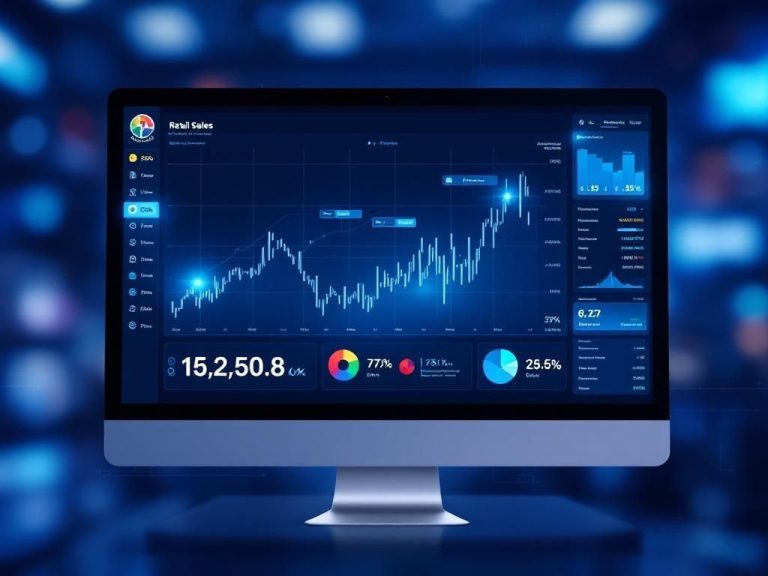The retail landscape is evolving rapidly, and the way businesses interact with their customers is changing too. In an era where data is abundant, retailers face the challenge of leveraging this information effectively. Predictive analytics is emerging as a game-changer, enabling retailers to anticipate customer behavior, optimize operations, and ultimately enhance their bottom line. This article explores the significant role of predictive analytics in retail and how businesses can harness its power for success in 2025 and beyond.
Understanding Predictive Analytics
Predictive analytics refers to the use of statistical algorithms and machine learning techniques to identify the likelihood of future outcomes based on historical data. In the context of retail, this means analyzing customer purchase patterns, inventory levels, market trends, and other relevant data to make informed decisions.
Core Components of Predictive Analytics
- Data Collection: Gathering comprehensive data from various sources such as sales transactions, customer interactions, and social media.
- Data Processing: Cleaning and organizing data to ensure accuracy and relevance.
- Modeling: Applying statistical models to predict future trends and behaviors.
- Validation: Testing the model’s effectiveness and refining it for accuracy.
The Importance of Predictive Analytics in Retail
As retailers look to enhance customer experiences and streamline operations, predictive analytics offers several benefits:
1. Enhanced Customer Experience
By understanding customer preferences and behaviors, retailers can tailor their offerings and marketing strategies more effectively. This leads to:
- Personalized product recommendations.
- Targeted promotions based on shopping habits.
- Improved customer service through proactive engagement.
2. Inventory Optimization
Predictive analytics helps retailers maintain optimal inventory levels, reducing costs and minimizing stockouts or overstock situations. Key benefits include:
- Accurate demand forecasting.
- Efficient supply chain management.
- Strategic markdowns for unsold inventory.
3. Improved Marketing Strategies
Retailers can utilize predictive analytics to refine their marketing strategies by identifying trends and customer segments that are most likely to respond positively. This includes:
| Marketing Strategy | Data Insights |
|---|---|
| Email Campaigns | Customer purchase history and engagement metrics. |
| Social Media Ads | Demographic data and online behavior analysis. |
| In-Store Promotions | Foot traffic patterns and seasonal trends. |
Challenges in Implementing Predictive Analytics
Despite its advantages, retailers may encounter challenges when implementing predictive analytics:
Data Quality Issues
Inaccurate or incomplete data can lead to erroneous predictions. Ensuring data integrity is vital for success.
Change Management
Transitioning to a data-driven approach requires a cultural shift within the organization. Employee buy-in and training are essential.
Technology Integration
Integrating predictive analytics tools with existing systems can be complex and may require significant investment.
Steps for Successful Implementation
To effectively harness predictive analytics, retailers should follow these steps:
1. Define Objectives
Determine what you aim to achieve with predictive analytics, such as improving sales forecasting or enhancing customer targeting.
2. Invest in Technology
Select appropriate software and tools that fit your needs. Popular options include:
- Tableau
- IBM SPSS
- Microsoft Azure Machine Learning
3. Build a Skilled Team
Employ or train data scientists and analysts who can effectively interpret data and apply predictive models.
4. Start Small
Begin with pilot projects to evaluate the effectiveness of predictive analytics before scaling up.
5. Continuously Monitor and Adapt
Regularly assess the performance of predictive models and make necessary adjustments based on feedback and results.
Future Trends in Predictive Analytics for Retail
As we look toward 2025, several trends are expected to shape the future of predictive analytics in retail:
1. Increased Use of AI and Machine Learning
Artificial intelligence will play a crucial role in enhancing predictive models, allowing for more nuanced and accurate predictions.
2. Real-Time Analytics
Retailers will increasingly rely on real-time data to make immediate decisions, improving responsiveness and customer satisfaction.
3. Integration of IoT Data
The Internet of Things (IoT) will provide retailers with valuable data from connected devices, offering deeper insights into customer behavior.
4. Ethical Data Use
With growing concerns over data privacy, retailers must prioritize ethical data practices and transparency in how they utilize customer information.
Conclusion
Predictive analytics is not just a trend; it is a vital component for retailers aiming to thrive in an increasingly competitive market. By harnessing data effectively, retailers can enhance customer experiences, optimize inventory, and improve marketing strategies. As we move towards 2025, embracing predictive analytics will not only unlock retail success but also pave the way for innovative and customer-centric business practices.
FAQ
What is predictive analytics in retail?
Predictive analytics in retail refers to the use of statistical algorithms and machine learning techniques to analyze historical data and predict future outcomes, helping retailers make informed decisions.
How can predictive analytics improve inventory management?
Predictive analytics can enhance inventory management by forecasting demand trends, optimizing stock levels, and reducing excess inventory, which ultimately leads to increased profitability.
What are the benefits of using predictive analytics for customer segmentation?
Using predictive analytics for customer segmentation allows retailers to identify distinct customer groups, tailor marketing strategies, and improve customer experiences, leading to higher conversion rates.
How does predictive analytics enhance pricing strategies?
Predictive analytics helps retailers optimize pricing strategies by analyzing market trends, competitor pricing, and customer behavior to set competitive prices that maximize sales and margins.
What role does predictive analytics play in personalized marketing?
Predictive analytics plays a crucial role in personalized marketing by analyzing customer data to create targeted campaigns, ensuring that marketing efforts resonate with individual preferences and drive engagement.
What are the challenges of implementing predictive analytics in retail?
Challenges of implementing predictive analytics in retail include data quality issues, integration with existing systems, the need for skilled personnel, and ensuring data privacy and security.




